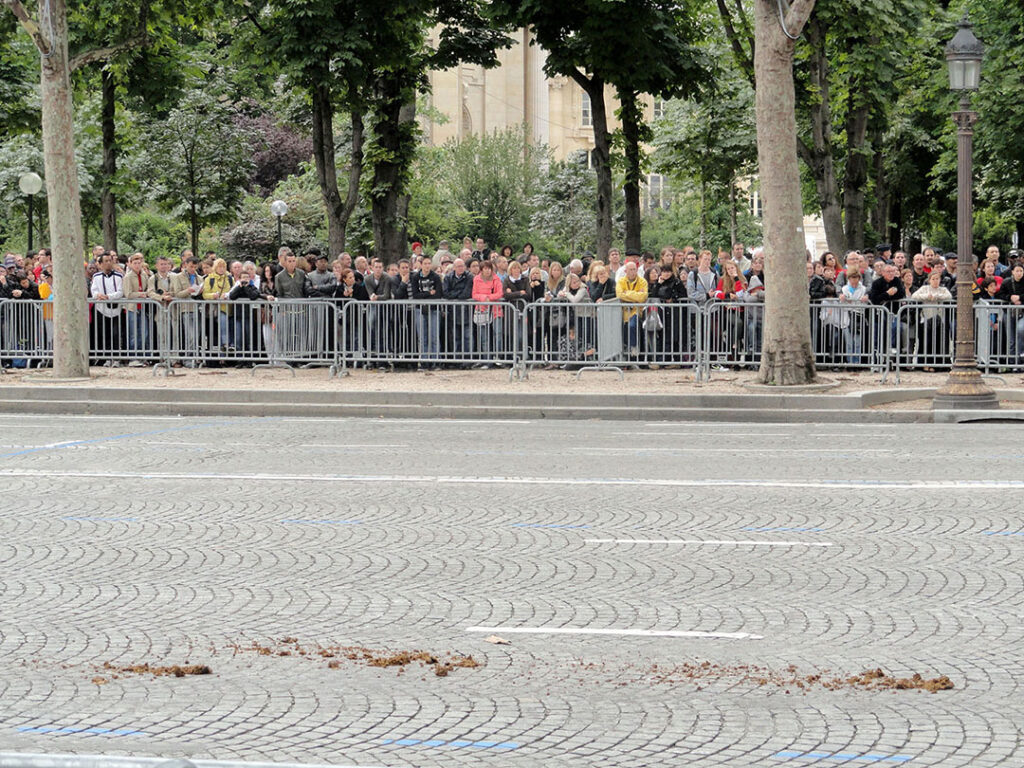2012-13 | Digital print on archival paper | Print (width x height): 16.5 x 11.6 in / 42 x 29.7 cm. | Archival Paper: Hahnemühle Photo Rag, 188 gsm, acid-free | Printer: Canon Pro 560 with Lucia Pigment Inks

Avenue des Champs-Élysées, is a photograph taken on Bastille Day; a national commemorative event presided over by the President of France and foreign dignitaries. Previously held elsewhere in Paris, it was first hosted along the Champs-Élysées* on the 14th of July, 1915 and has continued as an annual event ever since.
Amidst tight security and vigilance, spectators gather behind a metal barricade to observe and cheer the spectacle which displays the country’s ammunitions and military force. The sensate experience of the parade questions the contemporary intention of hosting a military parade, as part of a national event in France, or other such similar demonstrations around the world. Today’s military focused event starkly contrasts the original focus of Bastille Day, which was celebrated as a feast, before France became militarized in 1880.
Paradoxically, military parades are designed to create a sense of national pride and civil protection, but one can feel intimidated by the force of these armaments, which evoke an aggressive and foreboding atmosphere. The photograph reflects the transitory nature of the parade; leaving many spectators to further question their participation and what may or may not have existed?
Avenue des Champs-Élysées, takes inspiration from archival photos taken on 14th July 1916, when the Indian troops were marching as part of the annual Bastille Day Parade on the Champs-Élysées. The photograph was developed during Baptist Coelho’s Artist-in-Residence at Centre International d’Accueil et d’Echanges des Récollets, Paris, 2012. The residency was supported by Mairie de Paris; Institut Français; Espace Synethésie, Saint-Denis; Indian Council for Cultural Relations (ICCR), Delhi.
*In the 17th century, the avenue was simply fields and market gardens. It has gone through several transformations; including the name which was changed to Champs-Élysées in 1709. During the 18th century, it became a fashionable venue and even today, it is one of the principal tourist destinations; lined with luxury shops and cafés. The avenue runs for 1.91 kilometers, in the northwest district of Paris and ends at the Arc de Triomphe.